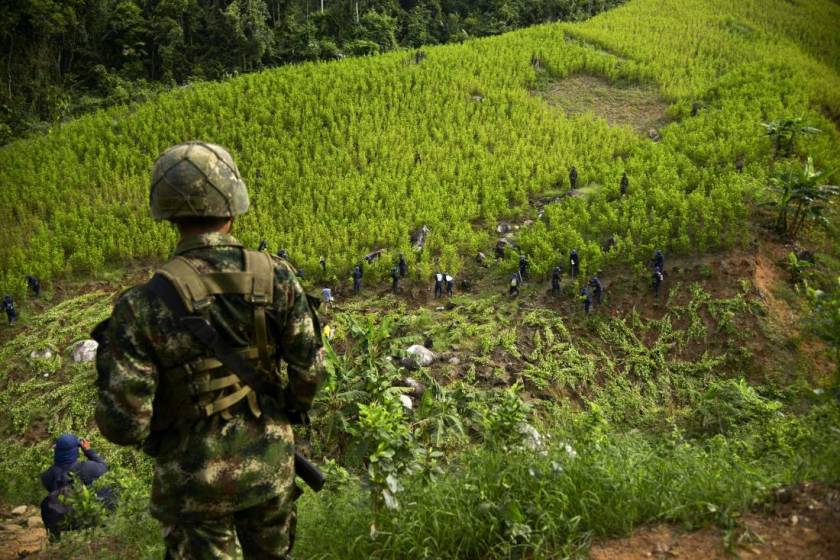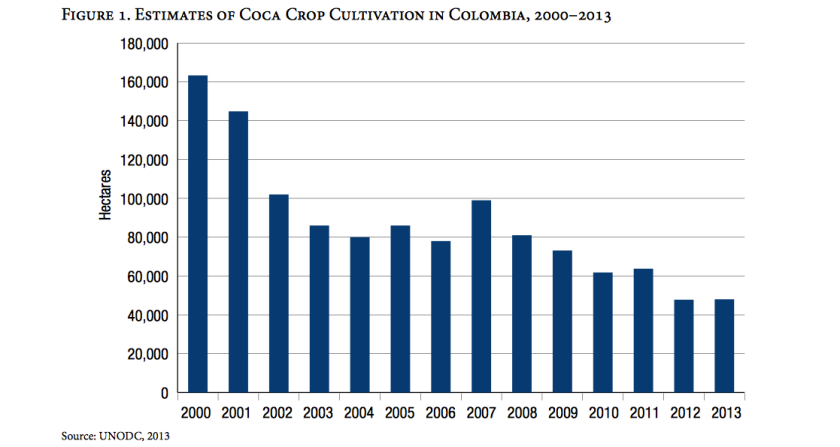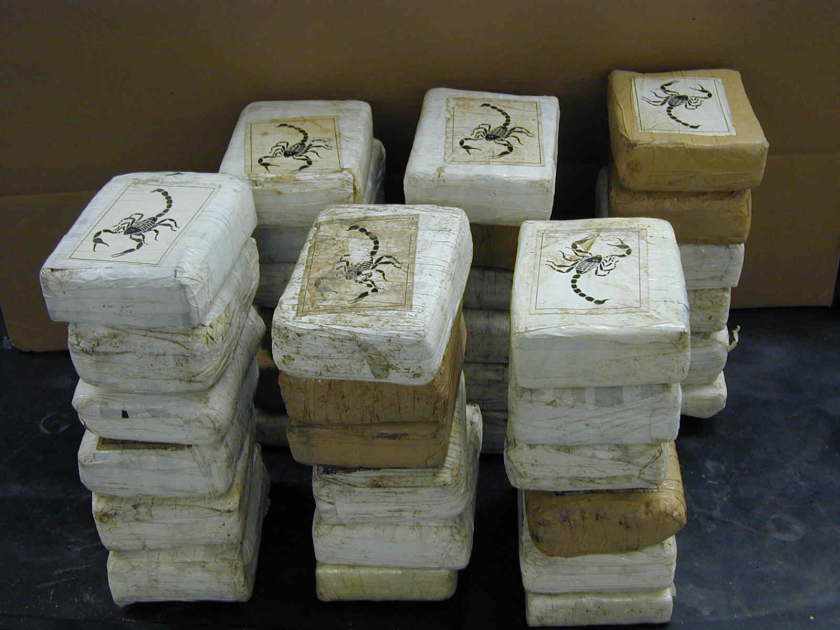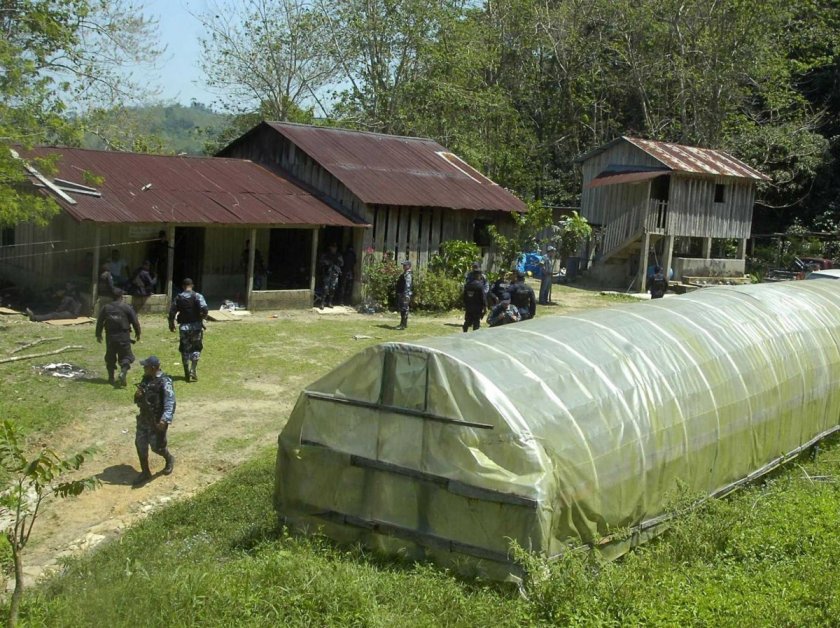Roughly 4 percent of the world’s population has used cocaine, and some 50 percent of that cocaine came from Colombia. The coca plant is one of Colombia’s top crops, and has been used for several decades in funding the F.A.R.C. and other rebel groups. Colombia’s weak justice system laid the perfect landscape for many decades of illegal coca cultivation, but created a dangerous field for journalists. Media professionals who seek to report the controversy are put at risk for kidnapping, assault or murder.

- source: TIME
Cultivation of the coca plant became popular in Colombia by the 1990s, and Colombia quickly became the leading grower of coca leaves. By 2000, Colombia was the top producer of the world’s cocaine.
Cocaine trafficking became popular worldwide, sending drug problems to other nations. Since the 1980s, the United States has put effort toward reducing the production of coca in Colombia. But, in 1999, Colombia and the United States created a joined strategy to end organized crime and drug trafficking, called Plan Colombia.
Plan Colombia has helped decrease coca cultivation, but has not stopped it. Below is a chart displaying coca cultivation amounts within the past several years. Overall, cultivation has decreased, but some years prove to be better than others.

Today, the Sinaloa cartel is the largest drug organization and exports more than a third of the cocaine produced in Colombia. The cartel is involved in the Middle East, Europe and the United States.
“It supplies 80 percent of the heroin, cocaine, marijuana and methamphetamine — with a street value of $3 billion — that floods the Chicago region each year,”
– DEA, 2013
But, with the peace talks currently underway, F.A.R.C. activities have been slowly dwindling. A future compromise with the Colombian government could mean a bigger decrease in coca cultivation in the near future.
Reporting from the ring
Colombia has a national history of corruption and a weak justice system. For the past half of a century, Colombia has been in civil war with rebel groups advocating for communist ideologies. These rebel groups have proven their strength through rapid growth in military force, being responsible for the deaths and kidnappings of thousands of people. Their funds come directly from cocaine trafficking and robberies.
With no punishment or justice, Colombia’s land is a free-for-all for anyone with an agenda. Instead of using the justice system, Colombians take matters into their own hands if there’s an issue. When it comes to news reporting about the drug trafficking issues, journalists are forced to report on some of the most powerful and dangerous groups in the world.
Maria Jimena Duzan is a columnist for El Espectador who covered the Colombian drug beat. After enduring the danger of the job, Duzan wrote a nonfiction book about what it was like reporting on the drug organizations. She recounts the time when her apartment was bombed by drug lords, as well as her newspaper building. Her documentary filmmaking partner and best friend was also murdered. However, she produced valuable investigative reports on the drug organizations through her perseverance.
Duzan’s book, beyond personal tales, is commentary on the nature of journalism in Colombia. Those assigned to controversial beats will step on other people’s toes. Colombian journalists must be prepared for the consequences of their stories, and strong enough to handle what comes.

packages of cocaine from Colombia, from wiki.com
And, what about the rest of the world?
Colombia isn’t selfish with its cocaine. The country has proven to be a kingpin for the rest of the world, steadily supplying more than half the world’s cocaine for the past several years.
The United States has given millions of dollars since the 1980s to eradicate coca production, working together with Colombia to solve the issue. United States government wants to stop drug trafficking, but United States citizens want their money spent wisely. The majority of news reports about drug trafficking from US publications talk about successful drug seizures. If most stories talk about successes of Plan Colombia, what about reports on the issues?
Statistics are showing that Plan Colombia could have steadier progress at reducing coca cultivation. With the US reporting only about the successes of the plan, no conversation is happening about how to improve it. Unfortunately, the citizens are paying for Plan Colombia, yet can’t be aware of the true extent of its progress by consuming news. To find the real story, US citizens would need to further research and explore data.
The government and many US citizens alike both want a better future for Colombia and the drug issues. However, appeasing citizens by writing solely positive stories has a bigger negative outcome in the end. Perhaps it will take longer to solve Colombia’s drug problem with US citizens unaware of Plan Colombia’s real progress.
Other countries have different strategies for covering the Colombian drug conflicts. Some foreign publications are discussing the trafficking from an ethical standpoint, considering the many waves of consequences that come from drug trading. Metro, a news station in the UK, published a story today saying that cocaine use has tripled there in the past decade. The article says many consumers don’t consider the story behind their “party powder,” and the many people that died or suffered during the production.
Even after many weeks of studying journalism and Colombia, this article brought a new perspective to the way I see the drug trade world. Perhaps coverage that shows the consequences of drug trafficking, like this, is better in eradicating coca cultivation in Colombia.

coca cultivation base in Colombia, from insightcrime.org
What else is in the news?
This week, two Colombian journalists who were covering a case of another missing journalist both went missing. President Santos dispatched investigative groups to track down the three missing journalists, and the nation’s anti-kidnapping unit is on the ground. The article says that Santos believes the E.L.N. rebel group is responsible for the kidnappings.
This article is indicative of changes in government action. Impunity is a longstanding issue in Colombia, and many get away with crime. It’s new yet uplifting to see the government take serious action toward kidnappings of journalists — which has not always happened in the past. It’s also interesting to see journalists write a transparent story that openly accuses the E.L.N. of the kidnappings. If I were a journalist in Colombia, I would not publicly accuse the rebel groups of kidnappings before it was confirmed. An action like that would earn a huge target on my forehead. Perhaps with President Santos taking immediate actions, journalists now feel shielded from the violence of rebel groups. However, it’s impossible to deny the danger that is still around Colombia for journalists.
There is no easy answer to the correct way on covering drug trafficking in Colombia. Writing a transparent story is dangerous for those in Colombia, yet writing a biased story does no good in helping Colombia’s situation. Despite the mystery of the future, it’s impossible to deny the bravery and perseverance of past Colombian journalists. Without their news reports, the rest of the world would be naive to the issues Colombia holds and their worldwide consequences.
sources:
http://colombiareports.com/drug-trafficking-in-colombia/
http://www.publishersweekly.com/978-0-06-017057-8
http://www.utne.com/media/cocaine-in-colombia-ze0z1410zcwil.aspx
http://www.businessinsider.com/the-sinaloa-cartel-and-colombian-cocaine-2015-8